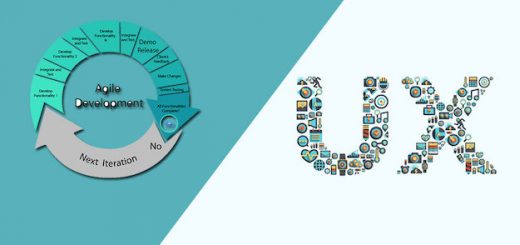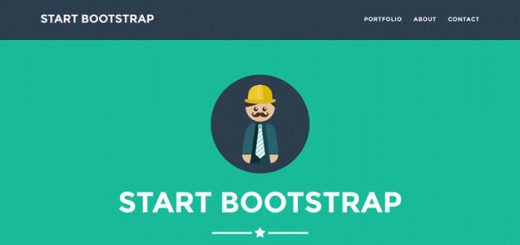Cross-platform mobile development refers to the development of mobile apps that can be used on multiple mobile platforms. Cross-platform mobile development can either involve a company developing the original app on a native platform which could be iOS, Android, Windows Mobile, BlackBerry/RIM, etc.
There are myriad of tools which allow cross platform mobile development, these tools are useful because they decrease costs and increase the speed at which apps are developed. In addition, cross-platform mobile development tools are generally quite simple to use as they are based off of the common languages for scripting, including CSS, HTML, and JavaScript.
This article includes 15 best cross-platform mobile development tools for developing mobile apps that work on multiple platforms including Android, iOS, Windows Phone, BlackBerry OS, etc.
Read Also–
Best Applications & Tools for Building Mobile Apps
Best Mobile App Development Frameworks for Developers
1. Pusher
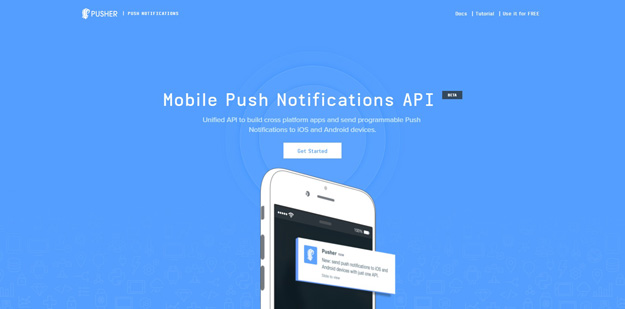
Pusher is a mobile push notifications API. It lets you build cross platform apps and send programmable push notifications to iOS and Android devices. Send push notifications to iOS and Android devices through one unified Push Notifications API for Google Cloud Messaging (GCM), Firebase Cloud Messaging (FCM), and Apple Push Notification Service (APNs). It’s free, and you can sign up with your GitHub or Google account.
2. RhoMobile

RhoMobile suite is based on Rhodes which is an open-source cross-platform development framework for rapidly building native apps. RhoStudio allows for development, debugging and testing of cross-platform enterprise apps with single tool simplicity. For access to built-in APIs for bar code scanning and RFID, support for the widest range of operating systems and more, developers can count on the value-added functionality of RhoElements.
3. Weex
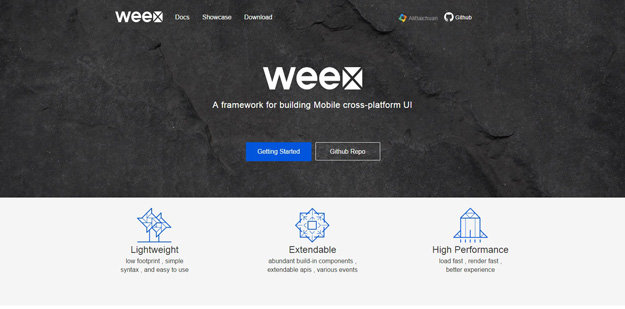
Weex is a mobile cross-platform UI framework. It’s lightweight, high-performance, and extendable. Weex is from Alibaba to build mobile apps with just HTML, CSS and JavaScript. It comes with Modules, UI components, its own DevTools and CLI that is designed towards mobile environment and to speed up development.
4. NativeScript
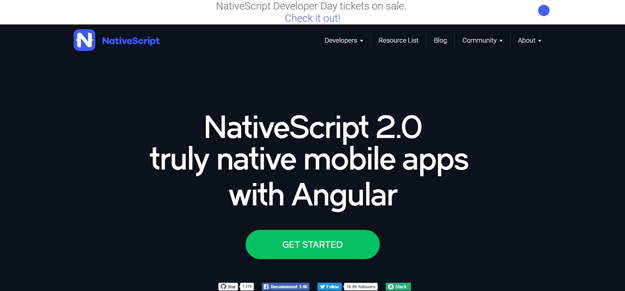
Nativescript is an open-source platform for building native cross-platform mobile applications. You can Write and deploy native mobile apps for iOS, Android and (soon) Windows from a single code base. You can Easily reuse existing plugins from npm, CocoaPods (iOS) and Gradle (Android) directly in NativeScript projects, plus hundreds of NativeScript specific plugins on npm.
5. CloudRail
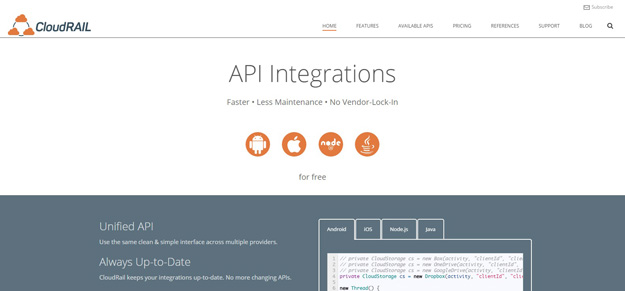
CloudRail is an API library for Android, Java, and iOS that lets you integrate multiple services with just one API. It’s completely free for both personal and commercial projects. CloudRail is behind integrations in apps used by millions of people every day. Join CloudRail and take your API integrations to the next level.
6. Kony

The Kony Mobility Platform is an open and standards-based, integrated platform for mobile app development and beyond. It supports the entire application software development lifecycle (SDLC) and empowers enterprises to quickly design, build, deploy, and manage multi-edge app experiences. Kony Mobility Platform provides automatic coding features, app preview facility, API connections and many more features.
7. Rikulo
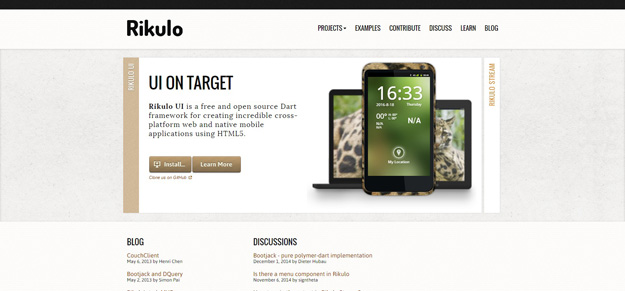
Rikulo UI is a Dart framework for creating cross-platform web and native mobile applications with HTML5. It uses a structured UI model and offers a responsive UX across desktop & touch devices.
8. Phonegap
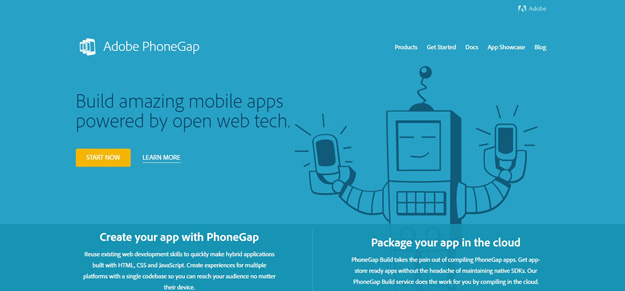
Phonegap allows you to create hybrid apps using popular web technologies (HTML5, CSS3 and JavaScript), it allows you using in-app, integrated payments via the App Store for iOS, the Google Play Store for Android and more.
9. Truck
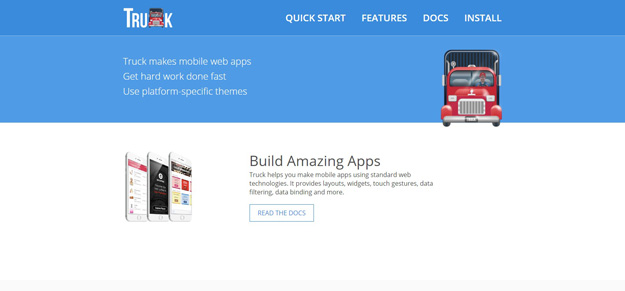
TruckJS is an open-source mobile app framework. It provides layouts, widgets, touch gestures, data filtering, data binding, and more, all with clean code. Truck has two kinds of templates, markup in the DOM, or markup in a script tag. You can use custom variables that make sense for the data you’re using. You can define helpers and templates can include JavaScript.
Truck supports ES6 Promises. If the browser supports these, no problem. Otherwise Truck uses a polyfill. Promises provide an elegant way to avoid nested tower of doom callback structures. Truck’s Fetch API uses promises by default.
Truck uses themes to create the look and feel of Android, iOS and Windows Phone. You create your app with one markup and one JavaScript. To support a platform is just a matter of providing the appropriate theme. Themes make your apps look great with little effort.
10. Xamarin

Xamarin apps leverage platform-specific hardware acceleration, and are compiled for native performance. This can’t be achieved with solutions that interpret code at runtime.
Xamarin apps have access to the full spectrum of functionality exposed by the underlying platform and device, including platform-specific capabilities like iBeacons and Android Fragments.
11. Tabris.js
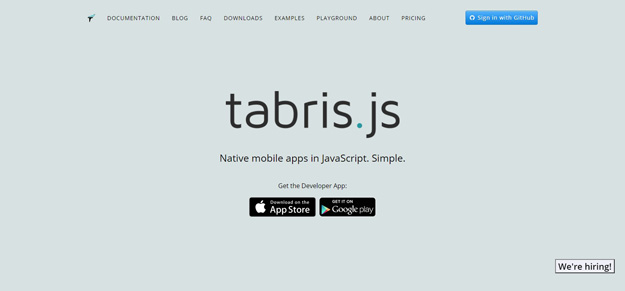
Tabris.js is a mobile framework that makes it simple to create native apps for iOS and Android in JavaScript. It doesn’t use WebViews for rendering UI, and instead creates native widgets on the mobile platform via a JavaScript-to-native bridge. This also enables the quick develop / deploy cycle that you know from web development.
12. Fabric
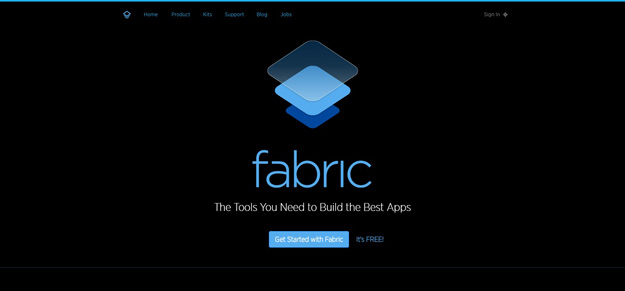
Fabric, from Twitter, is an easy way to build mobile apps. It’s cross-platform compatible and modular, with SDKs organized into “kits” to make dev easier. With Fabric, you’ll have a single, dedicated developer account with complete access to best-in-class mobile SDKs. Simply add a few lines of code and start coding your app right away.
13. MonoCross
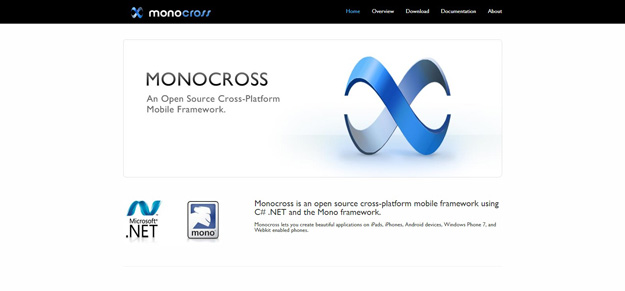
Monocross is an open source cross-platform mobile framework using C# .NET and the Mono framework. Monocross lets you create beautiful applications on iPads, iPhones, Android devices, Windows Phone 7, and Webkit enabled phones.
MonoCross currently supports native output for iPhone/iPad/iPod touch, Android, Windows Mobile, Windows Phone 7, and Windows XP/Vista/7. MonoCross also offers web/hybrid app support for Android, BlackBerry, iPhone/iPad/iPod touch, Symbian, and Web OS via HTML 5.0, CSS, and JavaScript. The Windows desktop-optimized browser uses Web based support and basic HTML/WAP for feature phone support.
14. SenchaTouch
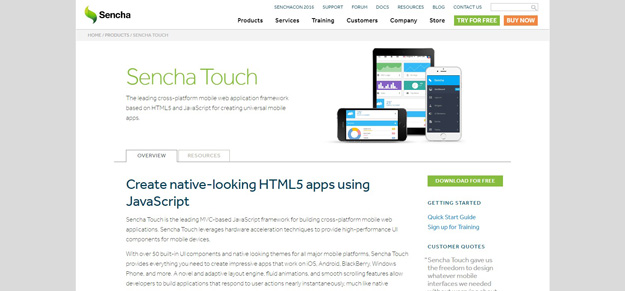
Sencha Touch is the leading MVC-based JavaScript framework for building cross-platform mobile web applications. Sencha Touch leverages hardware acceleration techniques to provide high-performance UI components for mobile devices.
With over 50 built-in UI components and native looking themes for all major mobile platforms, Sencha Touch provides everything you need to create impressive apps that work on iOS, Android, BlackBerry, Windows Phone, and more
The framework includes a robust data package that can consume data from any backend data source. An advanced charting package allows you to visualize data on mobile devices. Out-of-the-box, native-looking themes for every major platform enable you to make web and hybrid applications match the look and feel of your target platforms.
15. Apache Cordova
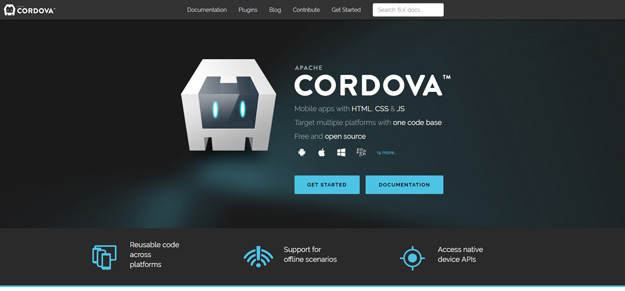
Apache Cordova is a set of device APIs that let you build native mobile apps using HTML, CSS, and JavaScript. Just combine it with a UI framework to create your apps. Cordova wraps your HTML/JavaScript app into a native container which can access the device functions of several platforms. These functions are exposed via a unified JavaScript API, allowing you to easily write one set of code to target nearly every phone or tablet on the market today and publish to their app stores.


